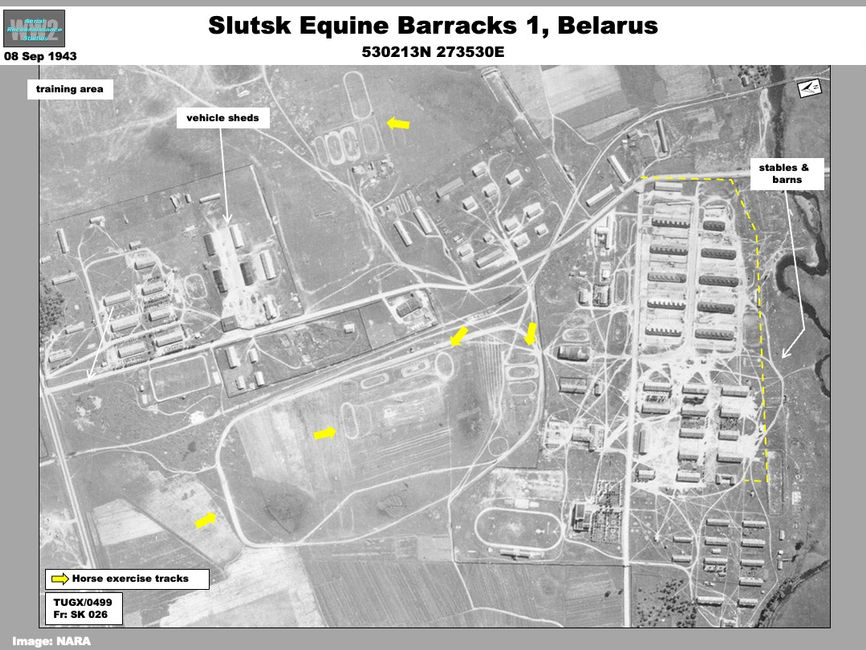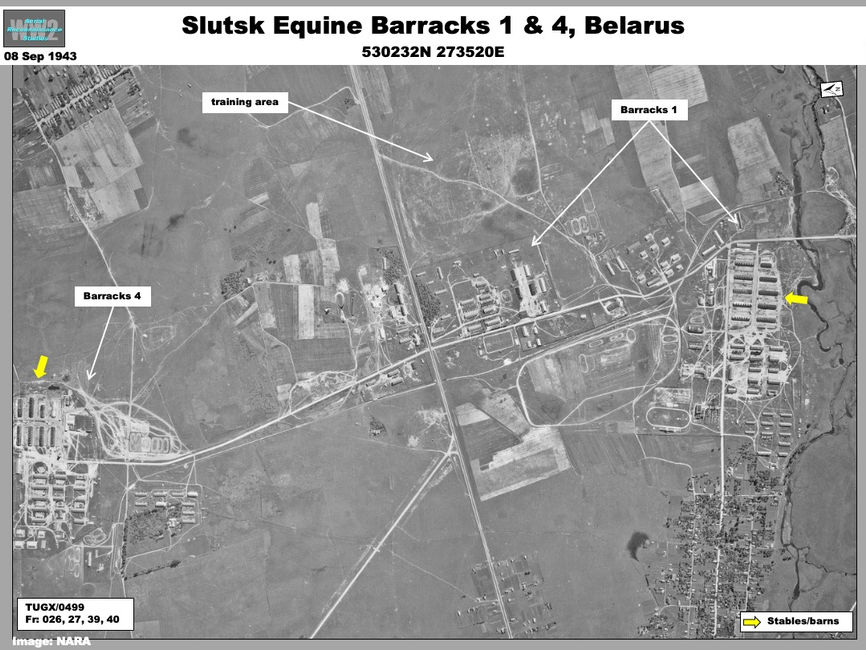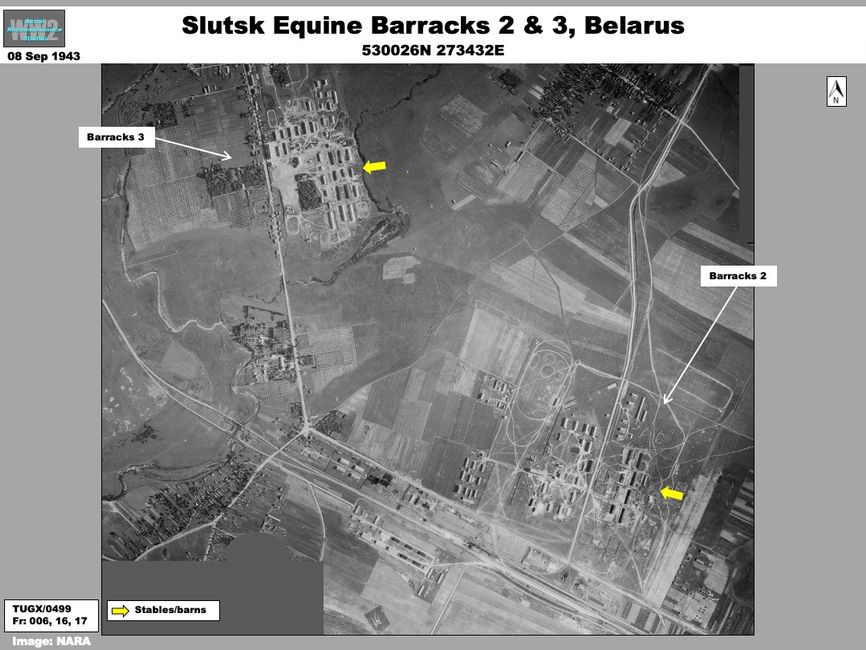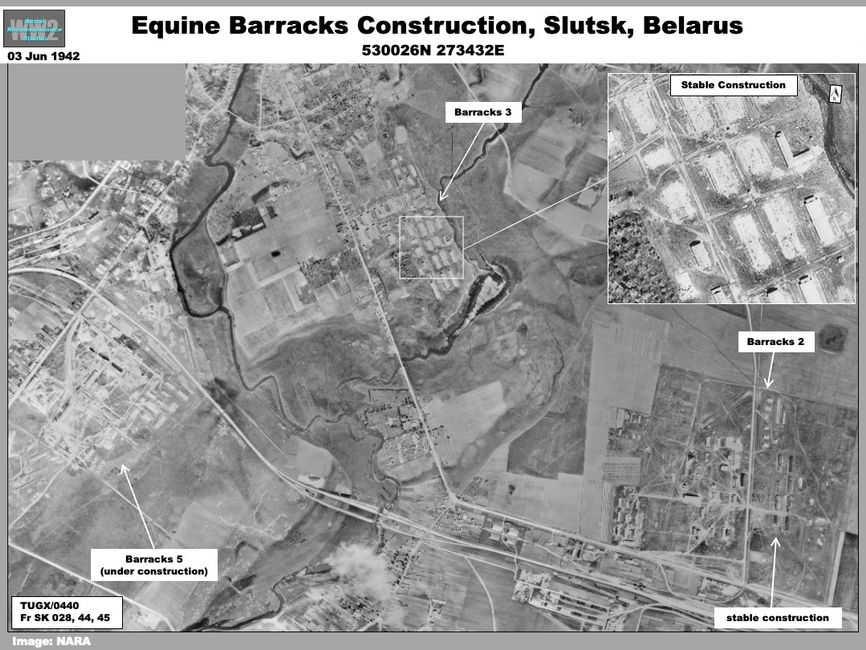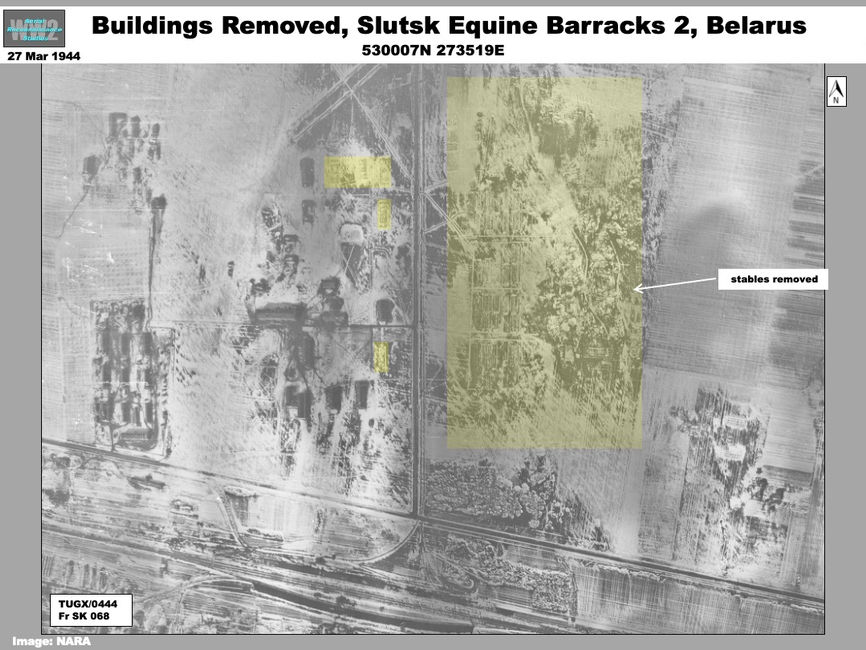WW2 AERIAL RECON STUDIES
Wehrmacht Equine Unit at Slutsk, Belarus
Facilities & Installations
The Wehrmacht relied heavily on horses for logistics. This is illustrated by the identification at Slutsk, Belarus, of a large unit with a mission to care for, rehabilitate and train horses.
Imagery coverage of Slutsk, a rail junction 90 km south of Minsk in September 1943 revealed four barracks (Barracks 1-4) accommodating a large number of horses and military personnel; a fifth installation (Barracks 5) may have housed headquarters elements. The presence of horses was indicated by eight-to-ten stables and equine exercise areas and rings at each of the four installations (Graphics). Barracks 1 had an attached training area; a larger field training area in the vicinity also showed the presence of horses.
The four barracks were under construction in June 1942; Barracks 3 and 4 appeared to be scratch-built, while existing firing ranges at the other two (plus the fifth barracks) indicated they were pre-war Soviet installations. All of the stable buildings appeared to have been built by the Germans. By March 1944, the stables and some other buildings removed from Barracks 2 and Barracks 5, strongly suggesting all of the facilities had been vacated (Graphics).
The installations at Slutsk most likely comprised a forward equine support base, it is noteworthy that three large Wehrmacht cavalry units were formed on the Eastern Front in 1943. The first Wehrmacht cavalry regiment --Kavallerie Regiment Mitte-- was formed by March 1943 for Army Group Center under Georg Freiherr von Boeselager (other regiments were formed for Army Groups North and South). It was also notable that during the Red Army offensive in 1944, Slutsk was defended by the 4th Cavalry Brigade (Kavallerie Regiment Nord, ‘Group Bickel’).
